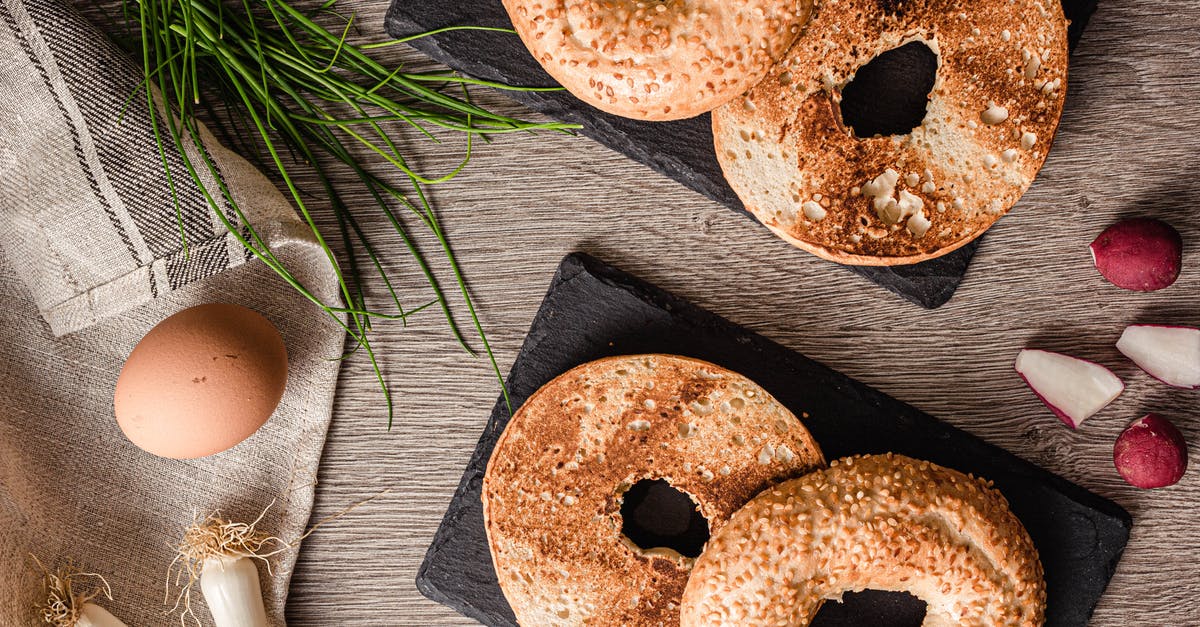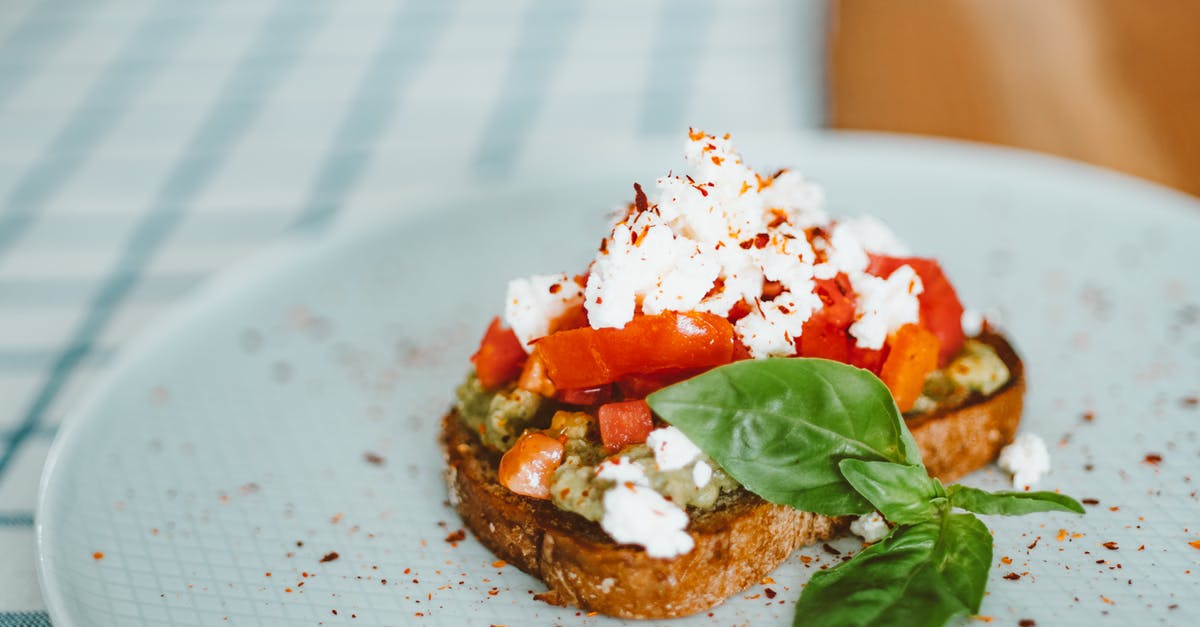Why Do Bagels Take Longer To Toast Than Regular Bread?

My brother's been bringing over fresh bagels in the morning. I've noticed that it takes nearly twice as long for a bagel to develop a toasted surface than a regular slice of bread. Why is that? This is a bagel split in half, mind you. One would also think that since a bagel half is taller in height than a slice of bread it is closer to the heating elements in my toaster oven which should hasten toasting, but no. I tend to think that it has something to do with the chemical/molecular makeup of the respective doughs. Can anyone shed some light?
Best Answer
Toasting is a form of browning, and browning requires temperatures in the neighborhood of 300 F (150 C…see Maillard reaction). There are at least two things that impede this progress when toasting a bread product: mass, and water.
The more mass the bread has, the more heat is required to be absorbed to raise the temperature of the bread by some amount. So naturally, a thicker, often denser bagel will require more heat to toast than a thinner, less-dense slice of sandwich bread.
Of course, a significant amount of the mass is water, and water at the surface of the bagel or other bread will prevent the temperature of the bread from reaching the level needed for browning. Heat must be applied long enough to drive off enough water to allow the temperature to rise high enough; there is more water stored in the thicker, denser bagel than in regular bread slices, and it takes time for enough of this water to work its way out of the bread that the surface can toast. †
Of course, a bagel also has a thick, relatively impermeable side which limits how much water can leave that side. So as the bagel heats up, moisture which is being driven off preferentially exits the sliced side. So not only is there more moisture to remove, the moisture isn't as free to move as it would be for sliced sandwich bread.
In other words, bagels need more total heat input to achieve the browning that is "toasting".
A typical toaster does not provide a way to control the level of heat during toasting. The main parameter that can be adjusted to account for toasting is time. I.e. to achieve the same total amount of heat input and subsequent toasting, an increased amount of time is required, because the same level of heat is being applied.
It is likely that a toaster could be designed that uses a variable amount of heat output according to the toasting setting, and which could toast a bagel in the same amount of time as thinner sandwich bread slices. But a higher heat level offers a much faster toasting over all and thus a narrower range of time for the right level of toasting. I.e. it'd be a lot easier to apply too much heat and burn the bread. The heat level for toasters seems to be designed to provide a good, user-friendly speed of browning, so that the casual user can easily achieve the desired level of browning without too much variability and over-toasted bread.
† Note: one might assume that because of the boiling step used to cook bagels, they might absorb additional water during that step and thus have more water to be removed during toasting. A logical assumption, but one which turns out to be incorrect. Little or no water is absorbed during the very brief boiling of the bagel:
Pictures about "Why Do Bagels Take Longer To Toast Than Regular Bread?"



Quick Answer about "Why Do Bagels Take Longer To Toast Than Regular Bread?"
The more mass the bread has, the more heat is required to be absorbed to raise the temperature of the bread by some amount. So naturally, a thicker, often denser bagel will require more heat to toast than a thinner, less-dense slice of sandwich bread.Why does some bread take longer to toast than others?
Brown bread absorbs more heat than white bread. This heat toasts the bread more quickly. Brown bread contains less water than white bread. Water takes a lot of energy to heat up, so white bread takes longer to toast.How long does it take for bagels to toast?
Put it in a toaster oven or an oven preheated to 375 degrees Fahrenheit for four to five minutes. If it has been stored in an airtight container or plastic bag for no more than three days, toasting the bagel whole will reverse the staling and give you a crispy crust and chewy interior.Why are bagels so much better toasted?
The toasting procedure also can improve the flavor of some bagels, much in the same way that roasting anything heightens flavor. Although the subtlety of a fresh bagel may be lost, a toasted bagel's crunchy edges and chewy insides are definitely desirable.What makes a bagel different to bread?
The main difference between bagel and bread lies in their preparation methods. Bagels are boiled in water before baking whereas bread is not.VERIFY: No, Toasting Bread Will Not Lower Calorie Count
Sources: Stack Exchange - This article follows the attribution requirements of Stack Exchange and is licensed under CC BY-SA 3.0.
Images: Lucie Liz, ROMAN ODINTSOV, ready made, ready made
